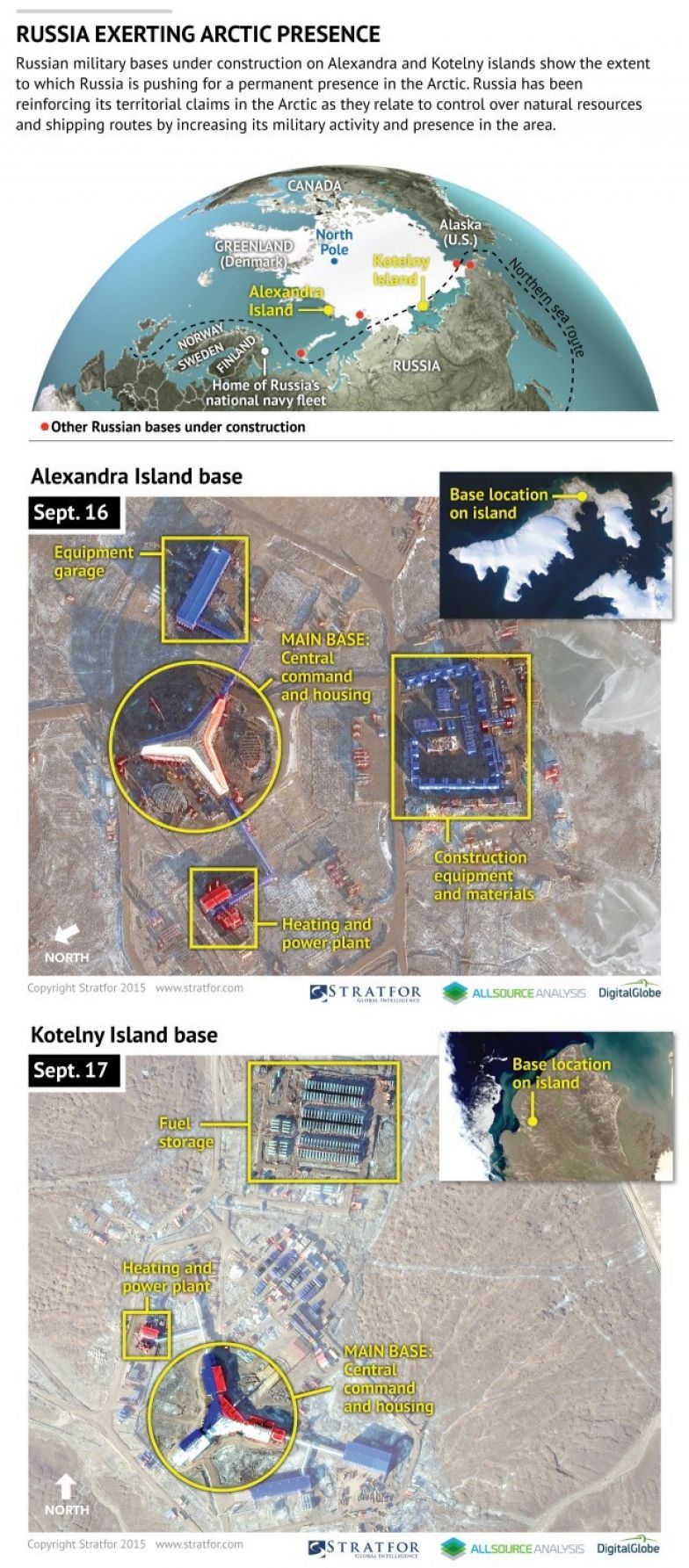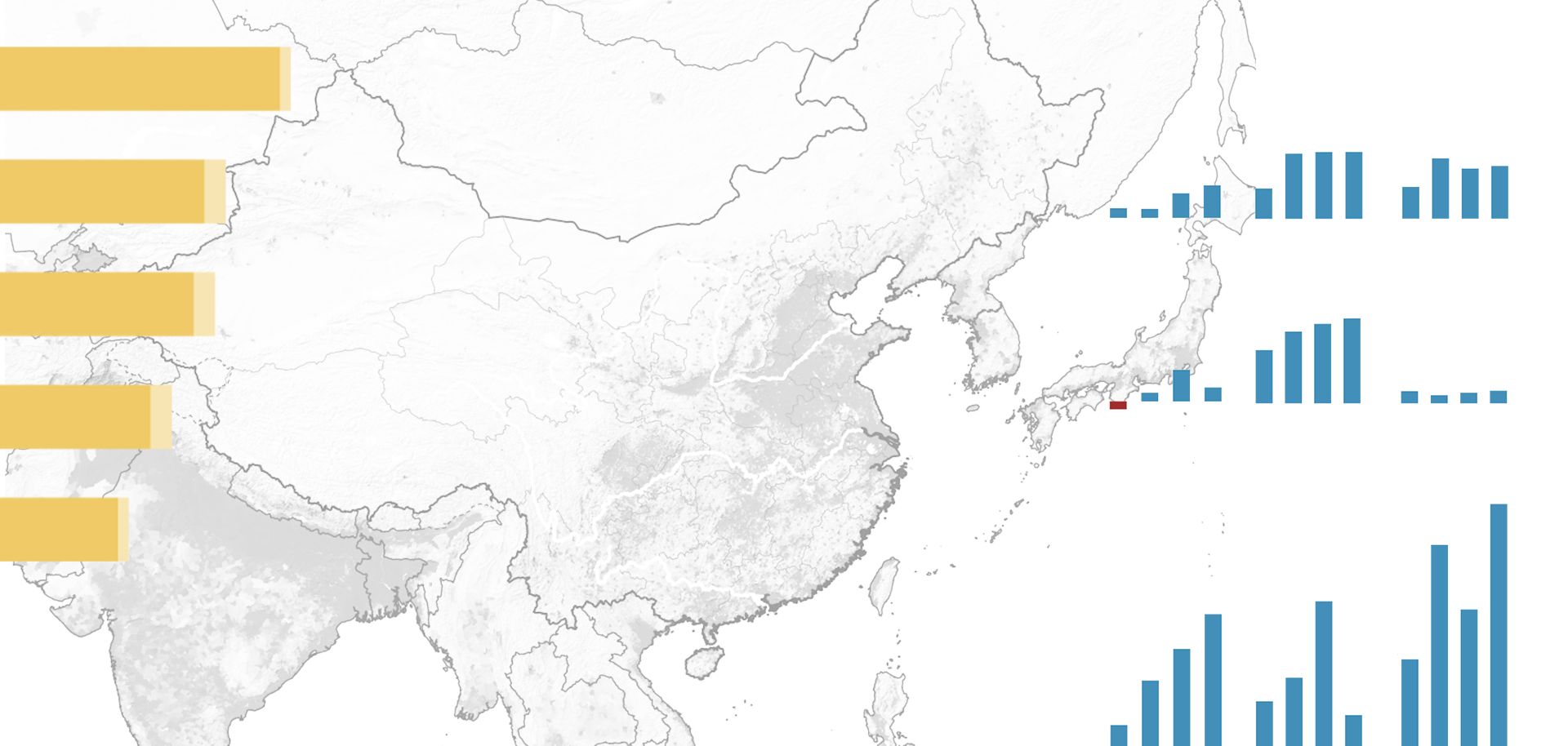
Russia has been reestablishing its military presence in the Arctic, and recent satellite imagery gives insight into Moscow's intentions. Ongoing construction and development of several permanent bases, specifically on Alexandra Island and Kotelny Island, suggests Moscow is looking to establish a monitoring outpost and to stake a territorial claim, but it has not yet built up a full-blown combat presence.
The Alexandra and Kotelny island positions are military posts, but they are not typical army bases. They are limited facilities that are capable of hosting a small contingent of soldiers but were not built with the goal of housing significant combat forces. The two bases consist of structures such as fuel depots and heating installations, and the islands themselves have runways and anchorages that allow for the delivery of construction materials and supplies. There is no major buildup of armored vehicles or air defenses. Military exercises have brought real combat capabilities to the Arctic region in the past, and the presence of runways on both islands does enable Russia to deploy its air assets to the bases at any given time. However, Moscow describes its Arctic bases in many ways: monitoring stations, border control complexes, and search-and-rescue centers.
The Kremlin has many interests in the Arctic, but perhaps the biggest, besides basic geopolitical imperatives, are natural resources. The Arctic is thought to contain about 30 percent of the world's undiscovered natural gas and 13 percent of its undiscovered oil. To Moscow, the reserves could prove to be a critical source of foreign investment that will drive economic development. The strategic sea routes could spur infrastructure development in northern Russia, offering yet another opportunity for growth.



